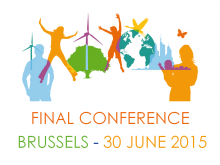This report examines the implications of a range of possible agreements for the reduction of greenhouse gases (GHGs) from industrial and terrestrial sources in terms of the likely future temperature increase, mitigation costs by region and a number of other important indicators. The agreements that are considered range from the case where the EU goes alone for a target reduction of 80% by 2050, to the case in which most of the countries of the world commit themselves to this reduction target.
The tool used for the analysis is the Global Assessment Model (GCAM) that links the world’s energy, agriculture and land use systems with a climate model. It covers all land uses and has therefore the capability to model policies that jointly cover carbon in all activities in the energy, agriculture, forest, and other land uses. The economic tool in the model is a carbon tax that applies equally to industrial and terrestrial emissions. Two carbon taxes are used, one for developed countries and another for developing countries, due to the fact that timing and the emission reduction required for both blocks are different.
With regard to carbon leakage, the report considers “industrial” carbon leakage (ICL) but also “terrestrial” carbon leakage (TCL), which has so far received little attention in other studies. The report finds that in the period to 2050 TCL is the dominant form of leakage. Thereafter, In the period 2050-2100, ICL will be the dominant type of carbon leakage. The second important conclusion of the report relates to emissions of GHGs and associated temperature changes. Even in the scenario that includes most of the countries of the world temperatures increase by 2.4°C by 2100, thus missing the 2°C target. A global agreement or a greater effort of the rest of countries is needed to reach the 2°C target. The third conclusion relates to the policy costs of the different scenarios. The report projects that the costs rise with the inclusion of more countries into the agreement, while this also leads to less emissions and smaller temperature increases.
Attachment:
Citation:
Funding:
Year of publication:
Number of pages:
Table of contents:
|
1 |
Executive summary |
5 |
|
2 |
Introduction |
8 |
|
3 |
Methodology |
10 |
|
3.1 |
Overview |
10 |
|
3.2 |
The energy and land use systems |
10 |
|
4 |
Scenarios |
12 |
|
5 |
Global results |
14 |
|
5.1 |
Environmental effectiveness: carbon leakage and emissions |
14 |
|
5.2 |
Effects in the global energy system |
18 |
|
5.3 |
Effects in the global land-use system |
20 |
|
5.4 |
Effect on the climate system and mitigation costs |
24 |
|
6 |
Implications for the European Union |
27 |
|
7 |
Conclusion |
30 |
|
8 |
References |
32 |
|
9 |
Appendix |
34 |


